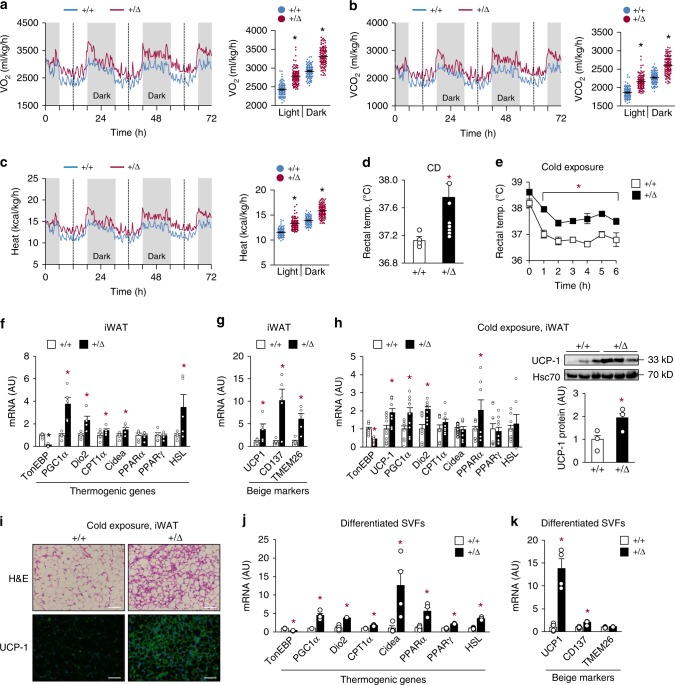Fig. 2.
TonEBP deficiency promotes energy expenditure and beiging of WAT. HFD-fed animals were analyzed by indirect calorimetry to obtain VO2 (a), VCO2 (b), and heat production (c) (n = 4). Rectal temperature (temp.) measured in CD-fed animals at room temperature (n = 8) (d) and after exposure to cold up to 6 h as indicated (4 °C) (n = 6) (e). f, g mRNA abundance of thermogenic genes (f) and beiging marker genes (g) in iWAT of HFD-fed animals (n = 5). h mRNA abundance of thermogenic genes (left, n = 10) and immunoblots of UCP-1 and Hsc70 (right, n = 3) in iWAT of CD-fed animals exposed to cold (4 °C). i Representative images of iWAT sections stained with H&E and UCP-1 antibody from CD-fed animals exposed to cold (4 °C). Scale bars, 100 μm. j, k Thermogenic gene (j) and beige marker (k) mRNA abundance in beige adipocytes differentiated from the stromal vascular cells of iWAT (n = 4). n represents number of biologically independent animals (a–e) or samples (f–k). a–h, j, k All data are presented as mean + s.e.m. AU arbitrary unit. The p-values are determined by unpaired t-test (d, f–k) or one-way ANOVA (a–c, e). *p < 0.05 vs. +/+. Source data are provided as a Source Data file

